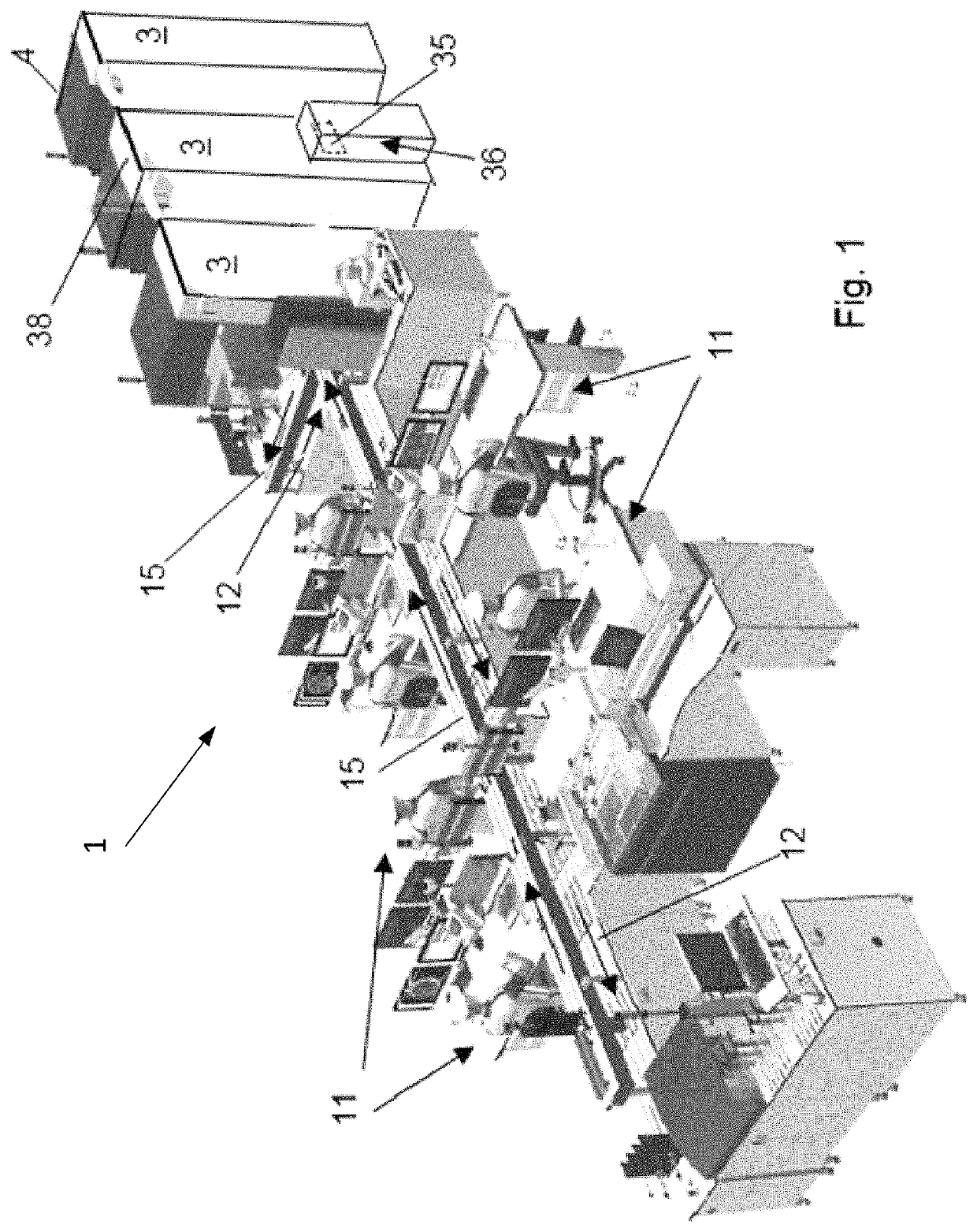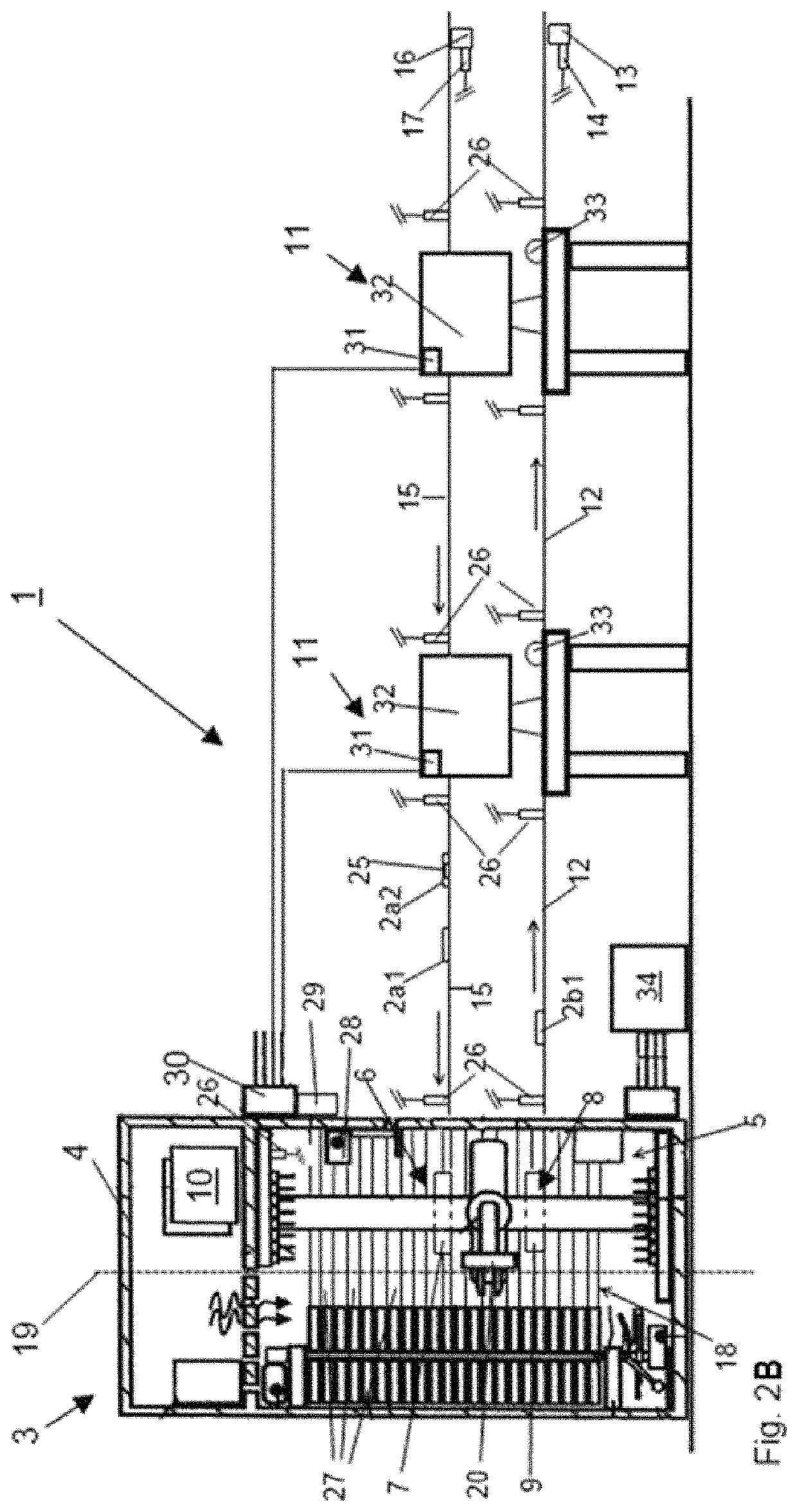System and method for incubation and reading of biological cultures
a biological culture and incubation system technology, applied in the field of biological culture incubation and analysis, can solve the problems of reducing the number of doors reducing the number of times any and reducing the time of any single door to the external environment. , the effect of reducing the amount of time a single door is open to the external environmen
- Summary
- Abstract
- Description
- Claims
- Application Information
AI Technical Summary
Benefits of technology
Problems solved by technology
Method used
Image
Examples
Embodiment Construction
[0040]FIGS. 1, 2A, and 2B illustrate a perspective view and schematic representation of different embodiments of a system 1 for automated management of sample containers such as plated media according to the present invention is shown. The system 1 includes at least one integrated incubator and image capture module 3. The integrated incubator and image capture module 3 includes a housing 4 having an incubation chamber 5 that controls environmental conditions such that inoculated containers 2 can be cultured in a controlled manner. The integrated incubator and image capture module 3 as illustrated in FIGS. 1 and 2 also includes a loading station 6 having a first door 7 for receiving inoculated containers 2a into the incubation chamber 5. In the illustrated embodiment, a discharge station 8 having a second door 9 separate from the first door 7 is provided to allow for the discharge of incubated inoculated containers 2b from the incubation chamber 5.
[0041]As seen from the embodiment sh...
PUM
| Property | Measurement | Unit |
|---|---|---|
| incubation time | aaaaa | aaaaa |
| incubation time | aaaaa | aaaaa |
| sizes | aaaaa | aaaaa |
Abstract
Description
Claims
Application Information
 Login to View More
Login to View More - R&D
- Intellectual Property
- Life Sciences
- Materials
- Tech Scout
- Unparalleled Data Quality
- Higher Quality Content
- 60% Fewer Hallucinations
Browse by: Latest US Patents, China's latest patents, Technical Efficacy Thesaurus, Application Domain, Technology Topic, Popular Technical Reports.
© 2025 PatSnap. All rights reserved.Legal|Privacy policy|Modern Slavery Act Transparency Statement|Sitemap|About US| Contact US: help@patsnap.com



